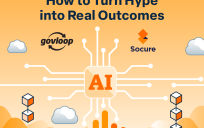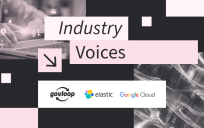Federal AI adoption is increasing. Also, national rulemaking about AI safety and security is increasing pressure on agencies to refresh their IT infrastructure. Prior to COVID-19, said Matthew Rose, Industry Principal, Global Public Sector, of Snowflake, the Government Accountability Office reported that some federal systems were as much as 60 years old. Readying them for AI has highlighted the importance of architectures that enable AI use at scale.
But, according to Rose, “you cannot have an AI strategy without a data strategy.”
An Ecosystem for Data
Legacy data architectures are expensive — and, in some cases, impossible — to maintain. Outdated programming languages, incompatible apps and siloed data impede modern security measures and comprehensive analytics. Moving to the cloud has made it possible for agencies to share data and standardize security. The next step, Rose said, is to normalize the data layer, eliminating redundancy that bloats databases and can cause errors.
“When you normalize the infrastructure layer, the cost and inefficiencies are reduced. The same [thing] occurs when you normalize the data layer,” he said. “It frees up the user’s time and energy. You can focus on getting access to the data in a secure way and building applications [that] allow the users to achieve what they want to.”
In California, for example, the onset of the pandemic resulted in an explosion of data that overwhelmed a legacy public-health platform, which couldn’t scale up to meet the sudden needs.
The California Department of Technology brought Snowflake in to deliver a secure, centralized platform for all the incoming data, including positive cases, testing, deaths and available hospital beds. Snowflake Marketplace enabled secure data sharing with other state agencies, departments and health partners.
“It reduced cost, yes, but more importantly, questions that had taken months to answer now were answered in hours,” Rose said.
Where AI Will Take Us
The ability to scale is even more important as agencies adopt AI. “Most organizations start with a proof of concept or a pilot,” Rose said. “And that’s right. But they commonly overlook the idea of scaling. With each [pilot] project, leaders should ask themselves, ‘What would happen if this is hyper-successful and we need it everywhere?’”
Structure the pilot with the ability to scale, he advised. That also applies to data — lay a technical and contractual groundwork that can incorporate data from multiple sources.
AI’s capabilities continue to improve. “What’s just around the corner is AI for agents,” he said. AI agents can focus on just one function, such as improving prompts, researching an answer or editing a document. Another AI brings all the results together in the final product.
Snowflake’s tools will help pave the way. “We’re focused on making AI easy, efficient and trusted,” said Rose. “What gets us up every single day is the fact that we are charged with mobilizing the world’s data so it can be utilized to its full potential and full value.”
This article appears in our guide, “Getting Practical with AI.” For more examples of how agencies are making real-world use of AI technology, download it here:






Leave a Reply
You must be logged in to post a comment.